
Kolob Fingers Road Scenic Byway
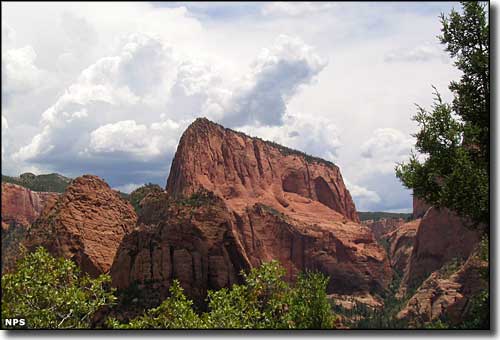
In the Kolob Canyons area
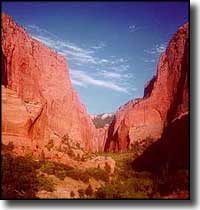
Kolob Fingers Road Scenic Byway is a five-mile route from the Kolob Canyon Visitor Center to the Kolob Canyon Overlook Rest Area. The route mostly follows Taylor Creek to the South Fork of Taylor Creek before turning and climbing the wall above Timber Creek and ending at the overlook.
Views along the route are into various of the Kolob Canyons. The rock on display is a mix of Entrada, Navajo and Kayenta formations. The Navajo sandstone is from a time when the whole southwestern US was buried under several thousand feet of desert sand dunes. The Kayenta formation is a mix of sandstone, mudstone and siltstone from when this area was at the edge of a vast inland sea and streams worked to deposit sands, mud and rock across the surface. Some layers of rock were deposited in those ages when the area was actually sea bottom. The layers of color come from the rock materials and the mix of organic debris available in those times. Some layers are filled with fossils, some with petrified wood. The Kayenta formation in particular has been twisted, squeezed and shifted over time so that much of that strata is now tilted whereas the Navajo and Entrada formation tend to run horizontally.
At the beginning of the Kolob Fingers Road are the Hurricane Cliffs: Kaibab limestone exposed as a result of a 120-mile fracture in the Earth's surface. Kaibab limestone was laid down during the days when the area was beneath a shallow ocean. Further along the Kolob Fingers Road Scenic Byway you'll drive past Horse Ranch Mountain, at 8,726' it's Zion's highest point. The cliffs around the mountain are almost entirely composed of Navajo sandstone. This is in the area of Taylor Creek, in the first couple miles of the road. There are several trailheads along here that head into the back country along the creek beds and through the fiery red cliffs.
The photo to the above left is of the box canyon that rises above the South Fork of Taylor Creek. You're going to see the tiny creek that flows from that canyon and wonder how it carved all that rock... Just above the beginning of the Timber Creek Canyon is the trailhead for the Lee Pass and LaVerkin Creek Trails. The Lee Pass Trail is a 14.4-mile round trip journey to Kolob Arch, possibly the largest sandstone arch on Earth. It's a strenuous hike that most folks take two days to do, meaning you'll need a back country permit and there are limited campsites available. The LaVerkin Creek Trail goes to LaVerkin Creek. LaVerkin Creek crosses the Kolob Canyons region of Zion Wilderness from the BLM's LaVerkin Creek Wilderness to the north to the BLM's Red Butte and Blackridge Wildernesses to the south.
The overlook at the end of the road offers a 270° view across of most of southern Utah.
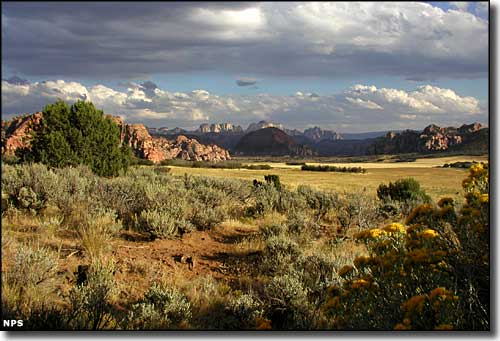
Kolob Terrace
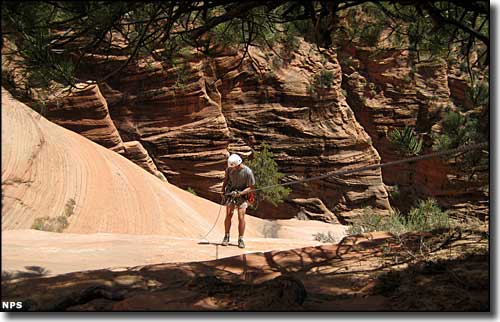
A typical slot canyon at Zion National Park
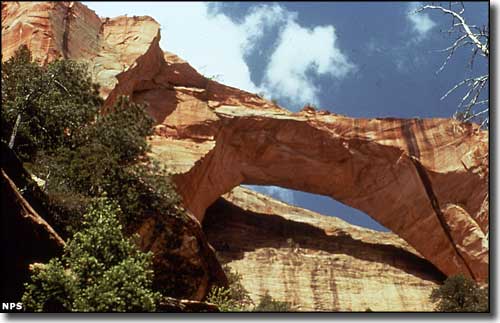
Kolob Arch, possibly the largest sandstone arch on Earth
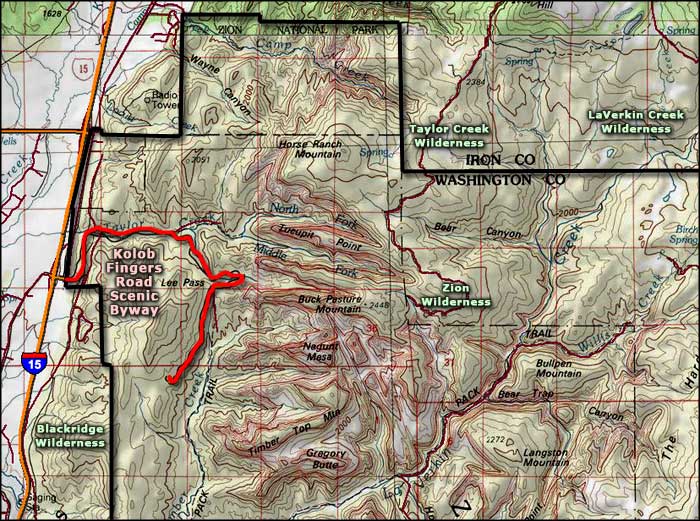
Kolob Fingers Road Scenic Byway map

Kolob Fingers Road Scenic Byway area map
